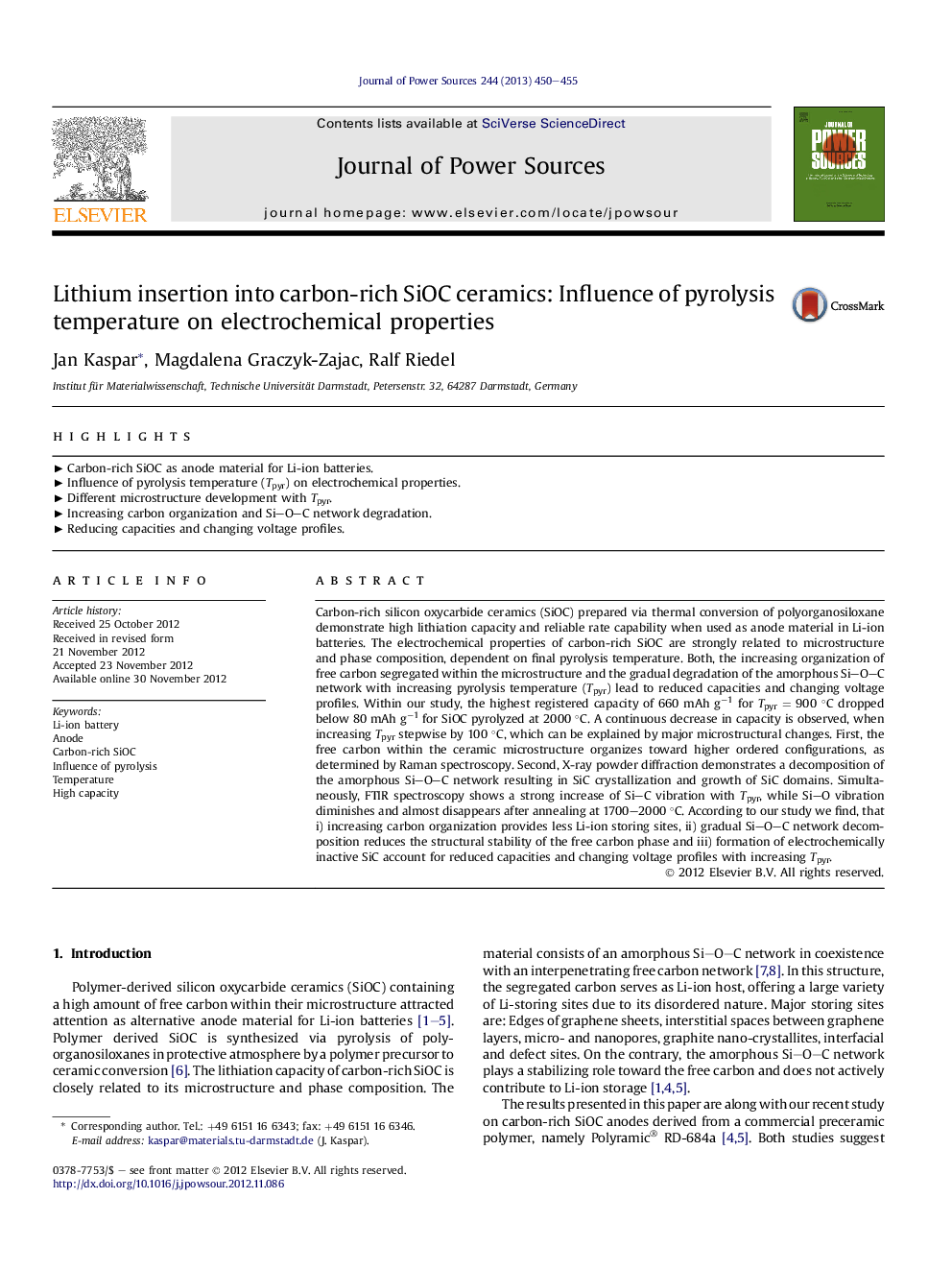| Article ID | Journal | Published Year | Pages | File Type |
|---|---|---|---|---|
| 1287497 | Journal of Power Sources | 2013 | 6 Pages |
Carbon-rich silicon oxycarbide ceramics (SiOC) prepared via thermal conversion of polyorganosiloxane demonstrate high lithiation capacity and reliable rate capability when used as anode material in Li-ion batteries. The electrochemical properties of carbon-rich SiOC are strongly related to microstructure and phase composition, dependent on final pyrolysis temperature. Both, the increasing organization of free carbon segregated within the microstructure and the gradual degradation of the amorphous Si–O–C network with increasing pyrolysis temperature (Tpyr) lead to reduced capacities and changing voltage profiles. Within our study, the highest registered capacity of 660 mAh g−1 for Tpyr = 900 °C dropped below 80 mAh g−1 for SiOC pyrolyzed at 2000 °C. A continuous decrease in capacity is observed, when increasing Tpyr stepwise by 100 °C, which can be explained by major microstructural changes. First, the free carbon within the ceramic microstructure organizes toward higher ordered configurations, as determined by Raman spectroscopy. Second, X-ray powder diffraction demonstrates a decomposition of the amorphous Si–O–C network resulting in SiC crystallization and growth of SiC domains. Simultaneously, FTIR spectroscopy shows a strong increase of Si–C vibration with Tpyr, while Si–O vibration diminishes and almost disappears after annealing at 1700–2000 °C. According to our study we find, that i) increasing carbon organization provides less Li-ion storing sites, ii) gradual Si–O–C network decomposition reduces the structural stability of the free carbon phase and iii) formation of electrochemically inactive SiC account for reduced capacities and changing voltage profiles with increasing Tpyr.
► Carbon-rich SiOC as anode material for Li-ion batteries. ► Influence of pyrolysis temperature (Tpyr) on electrochemical properties. ► Different microstructure development with Tpyr. ► Increasing carbon organization and Si–O–C network degradation. ► Reducing capacities and changing voltage profiles.
